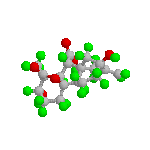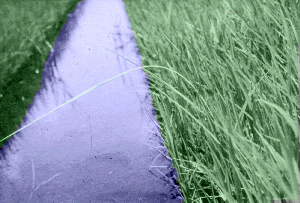

|
Gibberellins (GAs) are a group
of diterpenoid acids that function as plant growth regulators inflencing
a range of developmental processes in higher plants including stem
elongation, germination, dormancy, flowering, sex expression, enzyme
induction and leaf and fruit senescence. The origin of research
into gibberellins can be traced to Japanese plant pathologists who
were investigating the causes of the "bakanae" (foolish
seedling) disease which seriously lowered the yield of rice crops
in Japan, Taiwan and throughout the Asian continent. |


|
Bakanae is now easily prevented by treatment of seeds with fungicides prior to sowing. The first paper on the cause of bakanae was published in 1898 by Shotaro Hori who demonstrated that the symptoms were induced by infection with a fungus belonging to the genus Fusarium, probably Fusarium heterosporium Nees.
In 1912, Sawada published a paper in the Formosan Agricultural Review entitled "The Diseases of Crops in Taiwan" in which he suggested that the elongation in rice seedlings infected with bakanae fungus might be due to a stimulus derived from fungal hyphae. Subsequently, Eiichi Kurosawa (1926) found that culture filtrates from dried rice seedlings caused marked elongation in rice and other sub-tropical grasses. He concluded that bakanae fungus secretes a chemical that stimulates shoot elongation, inhibits chlorophyll formation and suppresses root growth. Although there has been controversy among plant pathologists over the nomenclature of bakanae fungus, in the 1930s, the imperfect stage of the fungus was named Fusarium moniliforme (Sheldon) and the perfect stage, Gibberella fujikuroi (Saw.) Wr. by H.W. Wollenweber. The terms "Fujikuroi" and "Saw." in Gibberella fujikuroi (Saw.) Wr. were derived from the names of two distinguished Japanese plant pathologists, Yosaburo Fujikuro and Kenkichi Sawada. Teijiro Yabuta initiated work on the isolation of the active component using the fungal strains provided by Kurosawa. In 1934, Yabuta isolated a crystalline compound from the fungal culture filtrate that inhibited growth of rice seedlings at all concentrations tested. The structure of the inhibitor was shown to be 5-n-butylpicolinic acid or fusaric acid. The formation of fusaric acid in culture filtrates was suppressed by changing the composition of the culture medium. As a result, a non-crystalline solid was obtained from the culture filtrate that stimulated the growth of rice seedlings. This compound was named gibberellin by Yabuta in 1935; the first use of the term "gibberellin" in the scientific literature. In 1938, Yabuta and his associate Yusuke Sumiki finally succeeded in crystallizing a pale yellow solid to yield gibberellin A and gibberellin B (The names were subsequently interchanged in 1941 and the original gibberellin A was found to be inactive.) Determination of the structure of the active gibberellin was hampered by a shortage of pure crystalline sample. By current standards the productivity of their fungal strain was extremely poor and they did not know that their sample of gibberellin A was not pure, but a mixture of structurally-related gibberellins. In the United States, the first research on gibberellins began after the Second World War by a research unit at Camp Dietrick, Maryland. In 1950, John E. Mitchell reported optimal fermentation procedures for the fungus, as well as the effects of fungal extracts on the growth of bean (Vicia faba)seedlings(Mitchell & Angel 1951). Work also began at the Northern USDA Regional Research Laboratories in Peoria, Illinois in the USA using the strain provided by Mitchell. Large scale fermentations were carried out with the purpose of producing pure gibberellin A for agricultural uses but initial fermentations were inactive. In 1951, Sumiki visited the United States and met Frank H. Stodola. After returning to Japan he sent new cultures to the USA but these also proved inactive. The problem was traced to the lack of magnesium in the culture medium and good yields of gibberellin were obtained when the culture medium was supplemented with magnesium sulphate. The physical properties of gibberellin isolated from these fermentations were found to be surprisingly different from those reported by the Japanese and the new compound was named gibberellin-x. (Stodola et al., 1955). At about the same time in the UK, a team of researchers ( Philip Curtis, Brian Cross, John Grove, Jake MacMillan and Paddy Mulholland) at Akers Research Laboratories (ICI) isolated a new gibberellin which was given the name "gibberellic acid".This compound had physical properties different from the Japanese gibberellin A(Curtis & Cross, 1954). Samples were exchanged between Stodola and Grove and "gibberellic acid" and gibberellin-X were found to have identical chemical and physical properties and the name gibberellic acid was accepted by both groups. A structure for gibberellic acid was proposed in 1956 but later revised see Grove 1961. In 1955, members of Sumuki group, (Takahashi et al.) succeeded in separating the methyl ester of gibberellin A into three components, from which corresponding free acids were obtained and named gibberellins A1, A2, and A3. Gibberellin A3 was found to be identical to gibberellic acid. In 1957, Takahashi et al. isolated a new gibberellin named gibberellin A4 as a minor component from the culture filtrate. In the mid 1950s, evidence that gibberellins were naturally occurring substances in higher plants began to appear in the literature. Using techniques that had been used to isolate gibberellins from the fungus, Margaret Radley at ICI in the UK demonstrated the presence of gibberellin-like substances in higher plants. In the USA, the first reports of a gibberellin-like substance in maize came from Bernard Phinney et al using dwarf maize mutants to assay for activity in plant extracts. This was followed by the isolation of crystalline gibberellin A1, A5, A6 and A8 from runner bean (Phaseolus multiflorus) (MacMillan et al. 1958, 1959, 1960,1962). The original samples from these isolations are now on display at Long Ashton. In the 1960s the number of gibberellins reported in the literature isolated from fungal and plant origins rapidly increased. In 1968, J. MacMillan & N. Takahashi reached an agreement that all gibberellins should be assigned numbers as gibberellin A1-x, irrespective of their origin. Over the past 20 years using modern analytical techniques many more gibberellins have been identified. At the present time the current number of gibberellins identified is 126. For a more detailed description of the history of gibberellins please see Phinney, B.O.(1983) and Tamura, S. (1990) Steve Croker References Curtis PJ, Cross BE. 1954. Gibberellic acid. A new metabolite from the culture filtrates of Gibberella fujikuroi. Chem. Ind. 1066. Grove JF. 1961. The gibberellins. Quart. rev (Chem. Soc. London) 15, 46-70. Hori S. 1898. Some observations on "Bakanae" disease of the rice plant. Mem. Agric. Res. Sta. (Tokyo) 12 (1),110-119. Kurosawa E. 1926.Experimental studies on the nature of the substance secreted by the "bakanae" fungus. Nat HistSoc Formosa. 16, 213-227. Macmillan J, Suter PJ. 1958. The occurence of gibberellin A1 in higher plants: Isolation from the seed of runner bean (Phaseolus multiflorus). Naturwiss 45, 46. Macmillan J, Seaton JC, Suter PJ. 1959. A new plant-growth promoting acid-gibberellin A5 from the seed of Phaseolus multiflorus. Proc. Chem. Soc. 325. Macmillan J, Seaton JC, Suter PJ. 1960. Isolation of gibberellin A1 and gibberellin A5 from< i>Phaseolus multiflorus. Tetrahedron. 11, 60-66. Macmillan J, Seaton JC, Suter PJ. 1962. Isolation and structures of gibberellin A6 and gibberellin A8. Tetrahedron. 18, 349-355. MacMillan J, Takahashi N. 1968. Proposed procedure for the allocation of trivial names to the gibberellins. Nature. 217. 170-171. Mitchell JE, Angel CR. 1951.The growth-stimulating properties of a metabolic product of Fusarium moniliforme.Phytopath. 41,26-27. Phinney BO. 1983 The history of gibberellins. In: The Biochemistry and Physiology of Gibberellins (Ed. Crozier A.) vol 1. pp 19-52. Praeger Publishers USA. Phinney BO, West CA, Ritzel MB, Neely PM. 1957. Evidence for gibberellin-like substances from flowering plants. Proc. Nat. Acad. Sci. (U.S.A.) 43. 398-404 Radley M. 1956. Occurrence of substances similar to gibberellic acid in higher plants. Nature 178. 1070-1071 Stodola FH, Raper KB, Fennell DI, Conway HF, Johns VE, Langford CT, Jackson RW. 1955. The microbial production of gibberellins A and X. Arch. Biochem. Biophys. 54, 240-245. Takahashi N, Kitamura H, Kawarada A, Seta Y, Takai M, Tamura S, Sumiki Y. 1955. Isolation of gibberellins and their properties. Bull Agric Chem Soc Japan. 19. 267-277. Takahashi N, Seta Y, Kitamura H, Sumiki Y. 1957. A new gibberellin, gibberellin A4. Bull Agric Chem Soc Japan. 21. 396-398. Tamura, S. 1990. Historical aspects of gibberellins. In: Gibberellins ( Eds Takahashi N, Phinney BO and Macmillan J) pp 1-8,Springer-Verlag New York.
|

